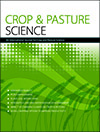CP22240Genetic monitoring of Indian rice (Oryza sativa) cultivars over decadal periods employing gene-specific markers and yield component traits
 , Sudhakar Palagiri and Lakshminarayana Reddy Vemireddy
, Sudhakar Palagiri and Lakshminarayana Reddy Vemireddy 
Trends of decade-wise genetic diversity were assessed in popular Indian rice genotypes released from the 1970s to 2010s, using gene-specific markers and key yield and yield- contributing traits. Genetic diversity showed a downward trend from landraces to the 2010s using both gene-specific markers and phenotypic data, although with slight deviations among various decades. This study reinforces the need for regular assessment of temporal trends in genetic diversity to meet future food demands while conserving on-farm crop diversity.




